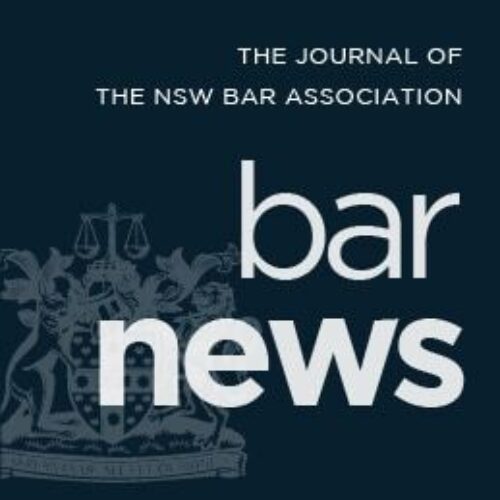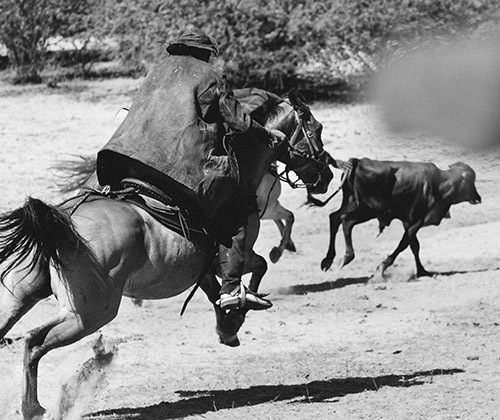- Winter 2022
- The characterisation of risk in ss 5B and 5L of the Civil Liability Act 2022 (NSW)
The characterisation of risk in ss 5B and 5L of the Civil Liability Act 2022 (NSW)

In Tapp v Australian Bushmen’s CampDraft & Rodeo Association Limited [2022] HCA 11, the High Court considered liability for injuries that were a manifestation of an obvious risk. The court made some important observations concerning the operation of the statutory defence provided by s 5L of the Civil Liability Act 2002 (NSW) (the Act).
Background
On 8 January 2011, the appellant, 19-year-old Emily Tapp, was a competitor in a multi-day campdrafting competition at Ellerston, NSW. The appellant was an experienced and able horsewoman and campdrafting competitor. The event was organised by the respondent.
Campdrafting involves a rider on horseback working cattle, by riding into a camp and cutting out (separating) a beast from a small herd of cattle. Once the rider has the beast under control, the rider calls for the gate to an arena to be opened, then rides into the arena and works the beast around pegs. The round is timed, with points awarded for skill and completion within predetermined time limits. Evidence was given that most campdrafting events (including multi-day events) occur without any rider falls. During the first two days of the Ellerston event, on 7 and 8 January 2011, there were 700 rounds upon the arena ground. Towards the end of the second day, and in the hour before the appellant was due to compete, there were four rider falls. After the first three falls, an experienced competitor approached an officer of the respondent and told him the competition should be stopped because of deterioration of the arena’s surface. This did not occur, because it was considered that the remaining competitors would gain an advantage by riding the following morning on better ground.
Another rider fell. The same experienced competitor again told the officer that the competition ought to be stopped as the ground of the arena was ‘unsafe’. In cross-examination, the officer agreed that the condition of the arena ground had been identified by him, and others, at that time ‘as being dangerous’ but it was again determined not to stop the event.
Shortly after the fourth rider fell, the appellant fell when her horse slipped while competing on the arena, and she and the horse fell. The appellant suffered a serious spinal injury, rendering her a paraplegic.
Damages were agreed between the parties in the amount of $6,750,000.

The decision of the Supreme Court of New South Wales
The primary judge (Lonergan J) held that the respondent had not breached its duty of care, that any breach was not causative of the appellant’s injuries, and that her injuries were as a result of the materialisation of an obvious risk pursuant to s 5L of the Act.
The primary judge characterised the relevant risk as being: ‘the risk of falling and being injured’, the risk ’that the horse would fall and as a consequence of that, [the appellant] would fall and be injured’ (at [133]), or ‘the risk of falling from the horse and suffering an injury while competing in a campdraft competition, given the complexities and risk inherent with that activity’ (at [131]).
Pursuant to ss 5F and 5K of the Act, an ‘obvious risk’ is a ‘a risk that, in the circumstances, would have been obvious to a reasonable person in the position of that person’. It includes ‘risks that are patent or a matter of common knowledge’, and can include risks that have ‘a low probability of occurring’ or which are ‘not prominent, conspicuous or physically observable’.
The primary judge found that the relevant risk was ‘obvious’ for the purposes of s 5L of the Act.
The decision of the Court of Appeal of the Supreme Court of New South Wales
A majority of the Court of Appeal (Basten and Payne JJA, McCallum JA dissenting) upheld the primary judge’s decision, finding that there was no error in the conclusion that the respondent had not breached its duty of care, and that any breach was not causative of the appellant’s injuries.
The High Court’s decision
The majority of the High Court (Gordon, Edelman and Gleeson J) upheld the appeal, holding that the respondent had breached its duty of care, that the breach caused the appellant’s injuries, and that those injuries were not the result of a materialisation of an obvious risk for the purposes of s 5L of the Act.
Characterisation of the risk
The majority considered that the relevant risk must be characterised at an appropriate level of generality (at [106]), and the correct characterisation of the risk was ‘the substantially elevated risk of physical injury by falling from a horse that slipped by reason of the deterioration of the surface of the arena’. Characterisation of the risk must include the ‘general causal mechanism of the injury sustained’ which ‘gave rise to the potential for the harm for which the plaintiff seeks damages’ (at [114]).
Breach of duty of care
The majority considered that the substantially elevated risk of injury, within the meaning of s 5B(2) of the Act, pointed to a reasonable person in the position of the respondent stopping the event and taking precautions, because the probability was foreseeable that harm would occur otherwise (at [126]). Precautions included satisfying itself that the arena ground was relatively safe. By inference, prior to the appellant’s round the arena ground had substantially deteriorated (at [134]). The failure by the respondent to stop the event and inspect the arena ground amounted to a breach of duty (at [143]).
Causation
The majority held that the breach of duty caused the appellant’s injuries (at [147]). A relevant counterfactual proceeded on the basis that the respondent would have stopped the event in order to inspect the arena ground (at [149]).
s 5L of the Act
The following observations were made by the majority concerning s 5L of the Act:
1. the relevant risk should ordinarily be assessed after a determination that there is prima facie liability in negligence (at [111]);
2. the relevant risk is at the same level of generality as its characterisation when assessing whether there has been a breach of a duty of care (s 5B) as well as for the purposes of assessing causation (s 5D) (at [112], [114]);
3. the assessment of the obviousness of the risk proceeds from the perspective of a reasonable person in the plaintiff’s (not the defendant’s) position (at [113]); and
4. it is unnecessary for the defendant to show the precise manner in which the injuries were sustained for the purpose of characterising the risk (at [115]).
Three reasons, combined, meant that the appellant’s injuries were not the result of the materialisation of an obvious risk:
1. the appellant did not have the opportunity to inspect the ground prior to her round (at [152]);
2. a reasonable person in the appellant’s position would not have any concerns about the condition of the arena ground (at [153] and [154]); and
3. a reasonable person in her position, if they had turned their mind to the matter at all, would have relied on the respondent to assess and make an appropriate decision about the arena ground (at [155]).
In dissent, Kiefel CJ and Keane J found that the appellant failed to prove the deterioration of the arena’s surface caused her horse to fall, or to demonstrate that the respondent ought reasonably to have suspended the competition and ploughed the surface before allowing the event to continue (at [44] and [56]). Of note, their Honours’ reasoning included that the evidence that the arena was ploughed the morning following the appellant’s incident was apt to introduce a degree of hindsight (at [60]–[64]). BN
